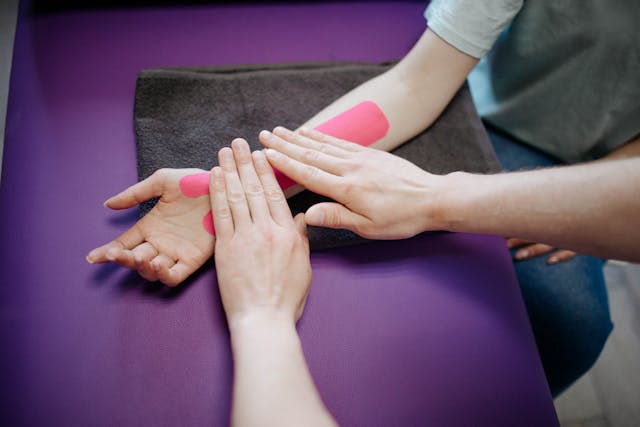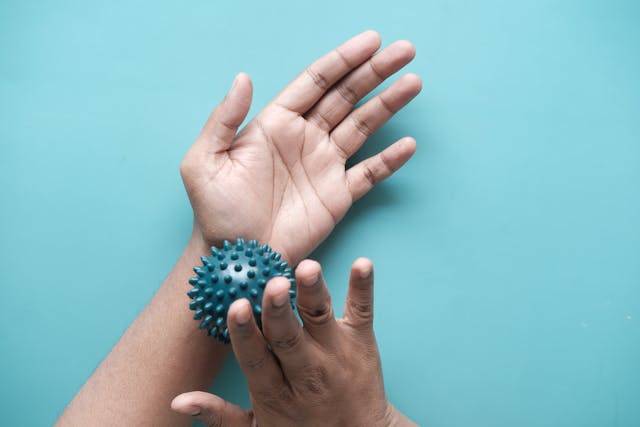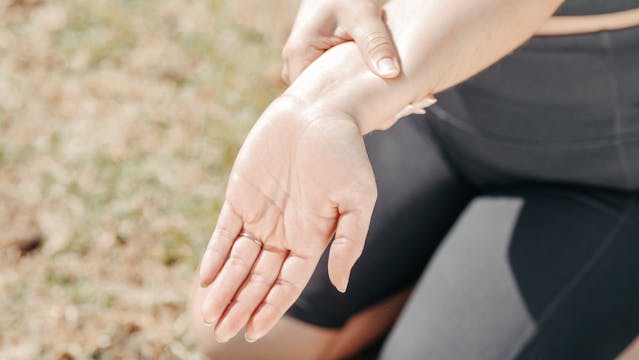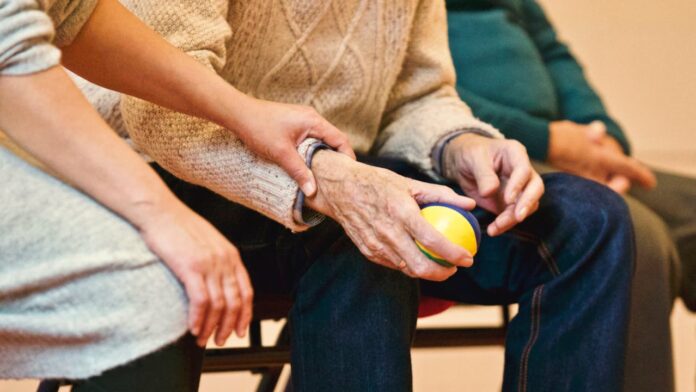Physiotherapy is about rehabilitation by different methods. Some of these methods require the use of certain tools that aid in the treatments. They come in many forms, such as common physiotherapy modalities like TENS (Transcutaneous Electrical Nerve Stimulation), Muscle Stimulator, Wax, Heating Pad, etc. These are used to relieve pain and inflammation. These are electrical therapy-based tools and use electricity. There are other types of equipment as well that help in healing. These are equipment that aid in exercise, such as resistance bands, weights, balance boards, grippers, and exercise balls. These tools help in bringing back the strength, stability, and functioning of the affected region. For someone who is seeking physiotherapy, there is a high chance that they may come across a handball. Why? Because it is one of the most common equipment used for a variety of different conditions in physiotherapy. The hand physiotherapy ball is a common piece of equipment used for rehabilitation.



Reduced hand functionality
Handballs are used for hand exercises. They help the hand to regain its strength and grip. There are many issues that can reduce the functionality of the hand. When the functionality is reduced, it can cause many issues. Firstly, reduced hand functionality can interfere with daily life. Many tasks that are easy may seem difficult, such as holding something, pressing a button, or even shaking a hand. This may result in injuries due to falling, not being able to hold on to anything, slipping of the grip, etc. Apart from physical issues, it can also result in psychological issues. Any change in the functionality of the body may cause mental health issues. Things such as anxiety, depression, or the feeling of not being able to work independently are all results of reduced hand functionality. Also, for many people, their social life may suffer due to isolation faced by them.



Handball in physiotherapy
Handballs that are used in physiotherapy are made of different materials. They are generally made of rubber, foam, or plastic. All of these materials are chosen according to the needs of the patient with specific conditions. For certain patients, a ball made of rubber is more suitable, and for others, a ball made of foam is the best option. It is ultimately decided by the physiotherapist which option should be considered.
Common conditions that require handball
There are many different medical conditions that require a handball. All of these conditions have their own level of rehabilitation that can be achieved by the use of a handball.
-
- Arthritis: This is the most common condition in which a handball can provide excellent results. Knuckles and the top joint of the fingers are common sites of arthritis of the fingers. This can result in pain and stiffness. A handball can help in reducing the swelling and pain.
-
- Post-Surgery Therapy: After the surgery of hands or fingers, a handball can be used for rehabilitation. It can help in strength training of the hand.
-
- Carpal Tunnel Syndrome: This is a common condition in which there’s numbness or tingling. It occurs when the median nerve is compressed. This condition requires treatment as, over time, it worsens. For Carpal Tunnel Syndrome, handballs are generally given in a treatment plan.
-
- Parkinson’s: Parkinson’s is a neurological disorder that happens in older individuals who are generally over 60. In this condition, there’s a lack of strength and mobility in various body parts, including the hand, as it affects the motor functions of the body. A handball is a common piece of equipment that is recommended for this condition.
-
- Fracture: A handball is also generally considered for rehabilitation after the treatment of fractures of the hands and fingers. They help the fingers regain their strength and functionality.



Some handball-based exercises
In physiotherapy, a handball is not only used in one way, but there are many different ways as well as variations in which a handball is used for rehabilitation.
-
- Gripping: As the name suggests, in this exercise, the handball is tightly gripped and held for a few seconds. It is repeated a number of times depending on the condition. This helps in improving the overall grip of the hand.
-
- Rolling: This helps with the mobility of the hand. In this, the ball is placed on a table and is rolled by the fingers from the fingers towards the palm. This is a very common exercise for mobility that is easy to do.
-
- Squeezing by finger: In this, the ball is placed between the fingers and is squeezed between the two. This exercise is for finger strength.
-
- Thumb press and flexion: This is for thumb strength. In this, the ball is placed in the palm, and only the thumb is used for pressing the ball and is then flexed outward.
Handball is a necessary part of physiotherapy. It is a major part of treatment in certain conditions such as arthritis or Parkinson’s. It is necessary to follow the exercises with full attention and to do them










